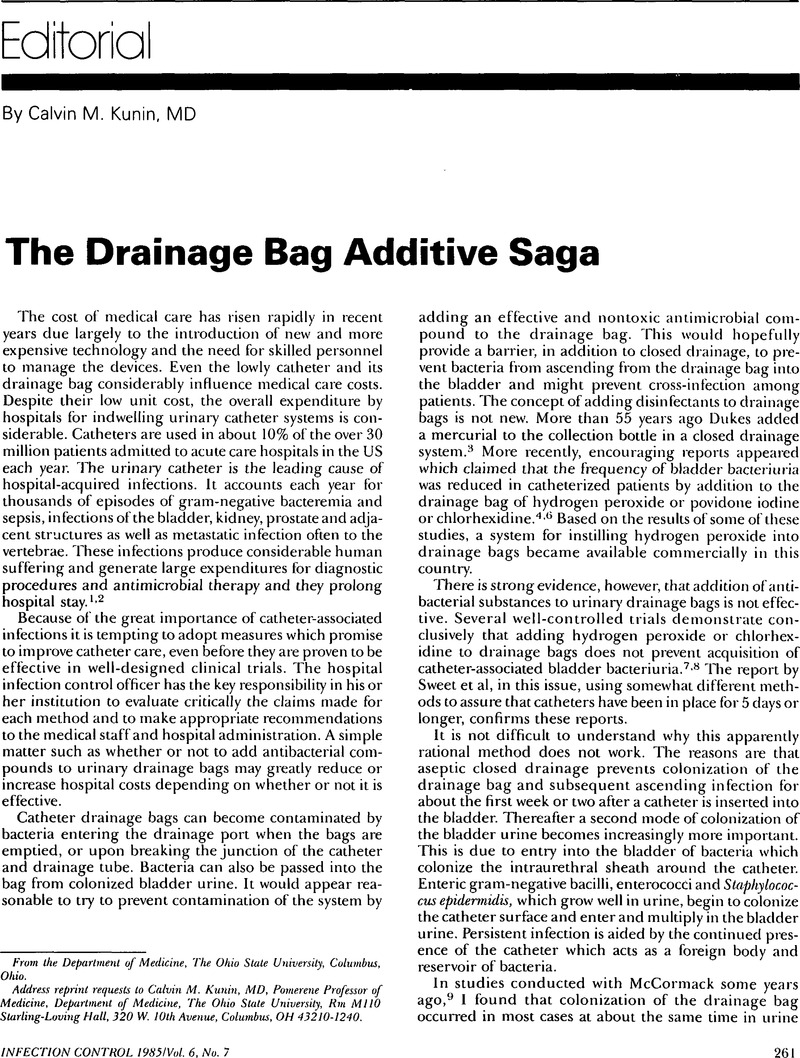Crossref Citations
This article has been cited by the following publications. This list is generated based on data provided by Crossref.
Stickler, D.J.
and
Chawla, J.C.
1987.
The role of antiseptics in the management of patients with long-term indwelling bladder catheters.
Journal of Hospital Infection,
Vol. 10,
Issue. 3,
p.
219.
Belfield, P W
1988.
Everyday Aids and Appliances: Urinary catheters.
BMJ,
Vol. 296,
Issue. 6625,
p.
836.
Carson, Culley C.
1988.
Nosocomial Urinary Tract Infections.
Surgical Clinics of North America,
Vol. 68,
Issue. 5,
p.
1147.
Sant, Grannum R.
and
Meares, Edwin M.
1991.
Therapy of Renal Diseases and Related Disorders.
p.
955.
Sant, Grannum R.
and
Meares, Edwin M.
1998.
Suki and Massry’s THERAPY OF RENAL DISEASES AND RELATED DISORDERS.
p.
1219.
Léone, M
Arnaud, S
Boisson, C
Blanc-Bimar, M.C
and
Martin, C
2000.
Infections urinaires nosocomiales sur sonde en réanimation : physiopathologie, épidémiologie et prophylaxie.
Annales Françaises d'Anesthésie et de Réanimation,
Vol. 19,
Issue. 1,
p.
23.



